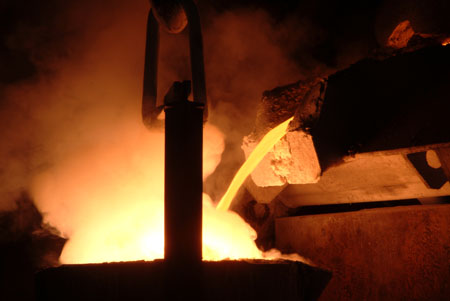Industrial photographers often find themselves photographing subjects that are challenging to portray in an interesting manner. Machinery, assembly robots and electronic equipment are not the first items that spring to mind as the subjects of aesthetically-pleasing images.
 Visit the plant before the shoot if possible. This helps to plan the required lighting and gives an opportunity to comment on the situation. It may be that small obstructing items need to be moved, machinery may need to be cleaned, or a process may need to be halted.
Visit the plant before the shoot if possible. This helps to plan the required lighting and gives an opportunity to comment on the situation. It may be that small obstructing items need to be moved, machinery may need to be cleaned, or a process may need to be halted.
Some subjects may be very large and hence difficult to light using artificial techniques. Daylight may be a good option if it is practicable. It minimizes reflection from polished steel surfaces, and gives a natural looking result without having to set up complicated lighting systems. Indoors, it may be essential to flash although if there is no movement in the image a very slow shutter speed can be used. Keep the contrast reasonably high and the tones rather cooler than normal. Industrial plant generally looks better under such circumstances.
Machines often feature straight lines and square angles, so make sure that the camera is kept level to avoid perspective problems. Otherwise, the perspective may have to be corrected at a later stage. Using a tripod, and a spirit level to set up the camera accurately, is usually worth the investment of time and effort.






